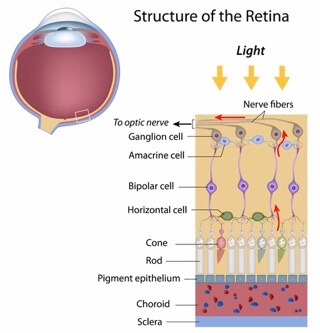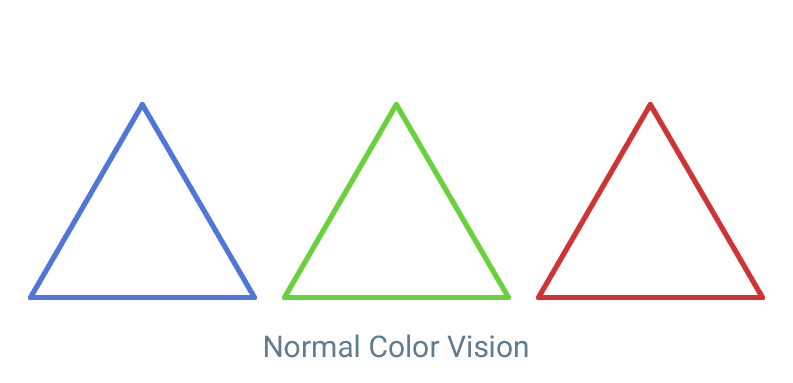Enchroma
Color Belongs To Everyone! Enchroma

What is Enchroma?
Enchroma is a company that has developed the latest in technology when it comes to color deficiency eyewear. Enchroma was founded in 2010 by Dr. Don McPherson, PhD (glass scientist) and Andrew Schmeder (U.C. Berkeley mathematician).
These revolutionary glasses combine the latest in color perception neuroscience and lens innovation to improve the lives of patients who have colorblindness. They are designed for outdoor and indoor use to provide the best quality vision possible.
Enchroma delivers an exceptional combination of clarity, brightness, and 100% UVA/UVB protection. All glasses are made with non-glare coatings on both sides to boost the clarity and reduce haze.
These glasses come with a 2-year warranty and if unsatisfied, there’s 60-day money back guarantee.
What is Colorblindness?
It is an inherited condition that affects about 8% males and 1% of females, caused by a recessive gene on the X-chromosome.
In the back of our eyes, in our retina, we have rods and cones that detect and respond to light which is essential for us to perceive images (see image).

The perception of color arises from the different cone receptors that are maximally sensitive at three separate wavelengths:
- L-CONE detects long wavelength light, enhancing the yellows and reds.Protan (“pro-tan”), is Red-green color blindness which is an anomaly of the “L” cones.
- M-CONE detects medium wavelength light, enhancing the greensDeutan (“do-tan”), which is an anomaly of the “M” cone type mainly responsible for seeing green colors.
- S-CONE detects short wavelength light, enhancing the blues.Tritanomaly/Tritanopia, which is an anomality of the “S” cone type is a blue-yellow color blindness and conditions called achromatopsia and monochromacy.
 Our brains determine what color it is seeing by observing the ratio between the signals it receives from each of the three type cones. Each type of cone is sensitive to different wavelengths of visible light.
Our brains determine what color it is seeing by observing the ratio between the signals it receives from each of the three type cones. Each type of cone is sensitive to different wavelengths of visible light.
For example, in the daytime, a chrysanthemum flower reflects color that actives both red and blue cones. The cones then send a signal through the optic nerve to the visual cortex of the brain. The brain processes the number of cones that were activated and the strength of their signal. After the nerve impulses are processed, you see a color… in this case, the mix of the red-blue cones; magenta.
When there’s not enough time, like nighttime, your rods would be stimulated. When the rods are the only ones
activated you don’t see color, just shades of gray.
The majority of color-blind types occur when there is an overlap of the M-CONE (green) and L-CONE (red) sensitive in the eye, causing noticeable hues to become indistinguishable. The outcome, the number of shades of color a typical color-blind patient can see may be reduced by as much as 90%.

How do they work?
©Text and images property of EnChroma®
These lenses are created using cutting edge technology that was in research for over a decade between Dr. Don McPherson, PhD (glass scientist) and Andrew Schmeder (U.C. Berkeley mathematician).
The lens technology increases contrast between the red and green color signals, alleviating symptoms of color blindness for a richer experience of your surroundings. With the application of science, optics, mathematics and more than 10 years of clinical research, EnChroma continues to advance the field of color vision research and bring new products to market that solve unique color deficiency issues.
In the eye of a person with color blindness, the M- and/or L-cones respond to light differently – due to a genetic substitution that modifies their chemical structure, the cone response functions are more overlapping than normal. The result of the overlap is a reduced ability to discriminate between certain shades of colors organized along the so-called “confusion line” for that individual. EnChroma develops optical lens technology that selectively filters out wavelengths of light at the precise point where this confusion or excessive overlap of color sensitivity occurs, which effectively increases the separation between the M- and L-cone signals.
Will they work?
Color blindness is not a singular condition. It encompasses a range of conditions, from mild to severe, that can cause each person to see color differently. EnChroma glasses are designed to improve color vision of people with forms of anomalous trichromacy, which are estimated to comprise four out of five cases of color blindness. The most common types are Protanomaly and Deuteranomaly, which are forms of partial red-green color blindness. In the most extreme cases, the complete absence of one of the cones photopigments, called Protanopia or Deuteranopia, are considered dichromats who may see limited results due to the complete inability to see red and green color differences. Reduced color discrimination of shades of blue and yellow is called Tritanomaly, which is not typically considered a form of color blindness. Fortunately, most cases of color blindness respond well to EnChroma spectral lens technology, enabling the perception of bright, vibrant color.
Explore your options and evaluate your color vision with this online test: Enchroma Color Blind Test.
Talk to our licensed optician to find out what type of colorblindness you have and try them for yourself in-office or through our short term Enchroma trial for 10-days. Try Enchroma in person before purchasing!

